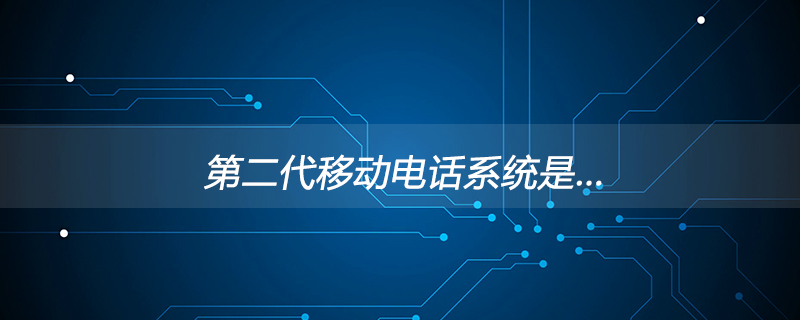
The second generation mobile phone system is?
The second generation mobile phone system is the Global System for Mobile Communications GSM .
Global System for Mobile Communications, abbreviated as GSM, is a digital mobile communications standard developed by the European Telecommunications Standards Organization ETSI. Its air interface uses time division multiple access technology.
Since it was put into commercial use in the mid-1990s, it has been adopted by more than 100 countries around the world. The ubiquity of the GSM standard has made it common for users to roam internationally after signing "roaming agreements" between mobile phone operators. The biggest difference between GSM and its previous standards is that its signaling and voice channels are digital, so GSM is regarded as a second-generation (2G) mobile phone system.
Technical Features
Spectral Efficiency
Due to the use of efficient modulators, channel coding, interleaving, equalization and speech coding technology to enable the system to have high spectral efficiency.
Capacity
As the transmission bandwidth of each channel increases, the interference ratio requirement for co-frequency multiplexing is reduced to 9dB, so the co-frequency multiplexing mode of the GSM system can Shrunk to 4/12 or 3/9 or even smaller (7/21 for the analog system); coupled with the introduction of half-rate voice coding and automatic traffic distribution to reduce the number of handovers, the capacity efficiency of the GSM system (per MHz channels per cell) is 3 to 5 times higher than the TACS system.
Open interface
The open interface provided by the GSM standard is not limited to the air interface, but also includes between networks and between various equipment entities in the network, such as Abis interface.
Security
Security is achieved through authentication, encryption and the use of TMSI numbers. Authentication is used to verify the user's right to access the network. Encryption is used on the air interface and is determined by the keys of the SIM card and the network AUC. TMSI is a temporary identification number assigned to users by the business network to prevent someone from tracking and leaking their geographical location.
The above is the detailed content of The second generation mobile phone system is. For more information, please follow other related articles on the PHP Chinese website!